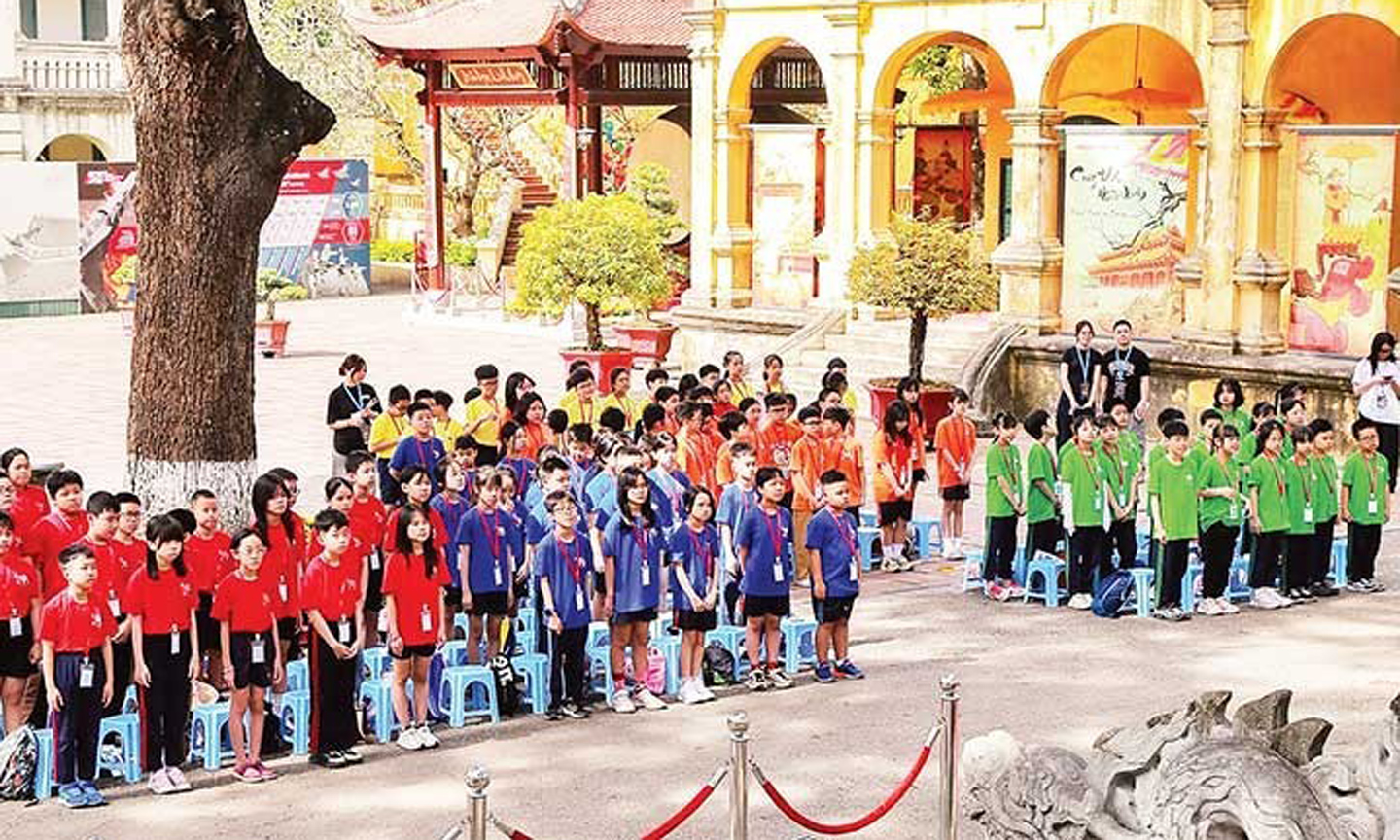Ha Noi promotes community role in heritage preservation
ABO/NDO- With more than one thousand years of history, Ha Noi is currently preserving many representative cultural and historical values of the nation. With 1,973 intangible cultural heritage items alongside 6,489 existing relic sites, no matter how much effort state agencies make, it would be difficult to provide complete coverage of all preservation and conservation work.
Therefore, promoting the role of the community is one of the most sustainable solutions. Following the inventory and review of relic sites across the city carried out from 2024, Ha Noi discovered an additional 547 site, bringing the total number of sites to 6,489. The city also has 1,973 intangible cultural heritage items.
Among these, there is one World Cultural Heritage site, five intangible cultural heritage items recognised by UNESCO, 23 special national sites, and 1,165 national sites.
 |
| Students take part in an extracurricular activity at the Thang Long Imperial Citadel. |
Whether cultural heritages are tangible or intangible, all face the risk of being lost or altered over time. Recognising that communities are the true custodians of heritage, in recent years UNESCO has always emphasised the role of local communities where heritage exists and advised countries to enhance the community’s role in preserving and promoting heritage values.
Understanding this clearly, the Ha Noi government has always created conditions for communities to fulfil their primary role in protecting, preserving and promoting the values of tangible and intangible cultural heritage.
This role is demonstrated through various forms. Former Deputy Director of the Ha Noi Department of Culture and Sports Truong Minh Tien said the city has issued policies for people to directly participate in relic site management; supervise restoration and many other activities, particularly creating a legal framework and encouraging community participation in preserving and promoting cultural heritage values.
In all communes and wards, there are relic site management boards; each village and residential area has established relic site protection committees with representatives from socio-political organisations, including the Fatherland Front, elderly association, women’s union and youth union. All residents are encouraged to contribute ideas and participate in implementing and supervising the management, protection and promotion of cultural heritage values where they live.
Residents elect representatives to participate in community supervision committees for local relic site restoration projects. Not only directly participating in management, preservation and restoration supervision, the city also implements many inter-sectoral activities to raise community awareness of heritage.
In recent years, the Ha Noi Department of Education and Training has introduced local education to schools throughout the city. Students both visit and learn about the city’s prominent monuments while also learning about relic sites and heritage in their neighbourhoods. Regarding intangible cultural heritage preservation, Ha Noi also implements many solutions, with particular attention to human factors.
The city has introduced policies to encourage artisans to maintain their crafts, provided annual funding for outstanding folk art clubs, and supported training in various forms of intangible cultural heritage at local levels.
The Ha Noi Department of Culture and Sports organises various programmes to create a playing field for artisans.
This forms the foundation for numerous intangible cultural heritage forms to be preserved, maintained or revived, even though some forms like ca tru and hat trong quan seemed at times to have nearly disappeared. One of the prime examples of promoting community role in heritage preservation is Thang Long Imperial Citadel.
The Thang Long - Ha Noi Heritage Conservation Centre has implemented numerous programmes to spread heritage values to the community, such as “I am an archaeologist”, “We learn about heritage”, Vietnamese New Year programmes with the recreation of important ceremonies in the imperial palace, celebrations of various festivals throughout the year and night tours “Decoding Thang Long Imperial Citadel”, which both attract large numbers of the public and serve as solutions to raise community awareness of heritage.
Director of Thang Long - Ha Noi Heritage Conservation Centre Nguyen Thanh Quang emphasised that in the 2003 UNESCO Convention affirms communities determine their cultural practices and that right needs to be respected.
The Cultural Heritage Law also reaffirms this. Therefore, for many years, the centre’s activities have always been directed towards the community. Notably, many programmes organised at Thang Long Imperial Citadel have the local community as the main participants.
With such sustainable solutions, Ha Noi serves as a model for heritage preservation and promotion of heritage values throughout the country.
(Source: NDO)
 về đầu trang
về đầu trang







